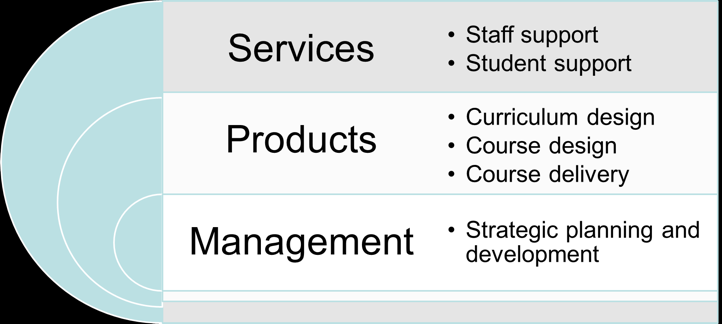Find out about the roles of teachers and students
When talking about quality within an organization, quality use referring to the macro level; i.e. national, regional and/or sector specific quality recommendations and standards, meso level; i.e. at the organisational/institutional level, the micro level refers to the course/module as such and finally to the nano level referring to people, i.e. teachers, staff etc. Since many levels are applicable, there are even a variety of interest groups, i.e. learners, teachers, librarians, technical staff, corpus makers, administrators, staff, but also staff from local, regional and national authorities. So when one speaks of quality enhancement, all levels must be considered and quality applied at all levels. In this section, however, quality mainly refers to the courses as such, i.e. course design, including course evaluation, and course delivery.

Quality is an important issue in the development, implementation and review of a course. One of the most important approaches of research is the application of a holistic ecological perspective, i.e. not only to look at the course design, the course contents and the course delivery, but also beyond that. It is quite common that only the quality of the course design and the execution is taken into account. However, one of the most important considerations is management and leadership issues (i.e. vision, strategy, incentives, recognition and infrastructure), as management and leadership will create conditions and how evaluations should be carried out. In addition, support, recognition and incentives for staff and capacity building, and learners/trainers are often ignored. Accordingly, a holistic and ecological approach is required, which is emphasised in the context of EADTU quality benchmarking. A recent global survey of quality models in online, open and flexible higher education used worldwide has made this very explicit (Ossiannilsson, Williams, Camiller and Brown, 2015). Over 40+ global models were surveyed. It presents quality models for online, open and flexible higher education that are used worldwide and makes 11 recommendations for future work in this area. Read more here https://www.icde.org/quality-models. It provides insights into the quality concept, the quality aspects and describes a selected number of models in relation to certification, benchmark, accreditation and consultancy frameworks and can thus serve as a guideline and inspiration for the development of quality frameworks. The results show on the one hand that there is no need for new quality systems as such, but on the other hand they show a large gap and the need for knowledge building, knowledge exchange, capacity building and coordination between the stakeholders.
One of the most common quality models examined in the above study is the European quality standard for online, open and flexible education, including blended learning, through the Excellence Associates Quality Label of the European Association of Distance Teaching Universities (EADTU). The quality benchmarking instrument E-xcellence helps universities and other educational institutions to improve their online, open and flexible (OOF) education at programme, faculty and institutional level. EADTU E-xcellence, shown here as an example of how to improve the quality focusing on accessibility, flexibility, interactivity and personalisation (or preferably personal learning) in three or six areas. It was clear that three main areas were crucial, and six areas need to be considered, as in the E-xcellence Quality Framework. In addition, the learner must also be considered in the centre, but not only in the centre, but also from the learner's point of view. The three, domains and their six areas are as described in this image: